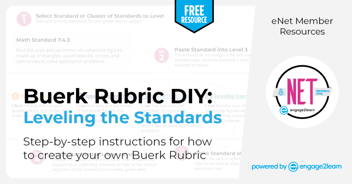Shifting the System We Have Inherited | engage2learn
Because my husband coached college basketball, we moved 10 times in the first 16 years of our marriage. As a high school teacher, I taught all secondary grades and every English level, including remedial and AP classes, in two different states. I had to learn new curriculum, new standards, and new resources nearly every year. Once, I had five different preparations and no classroom, which, as an English teacher with lots of books, meant my having a loaded cart to push around campus!
“When organizations begin to serve themselves instead of serving a purpose, they become bureaucracies.” -Lawrence Miller
With all of that variety, however, there remained one constant: the “system.” The Carnegie unit, the bell schedule, the furniture, the grading system, the graduation requirements, the separate courses and subjects were all things I could count on being consistent, even in every new situation. The factory model is pervasive. The segregation of content to allow for efficient distribution of information from the one and only source (teacher/textbook), through auditory or visual means to the recipients, has persisted. As I moved into ed leadership positions and into a consulting role, I was exposed to dozens and then hundreds of school divisions; yet, I found that pattern was still prevalent in spite of the fact that the context has changed drastically and many of these systems had become barriers to enhanced learning and growth for all learners in the current context.

Some campuses may have added technology, or stations where groups of students rotated through to get the information, or a more performance-based way to demonstrate receiving the knowledge/information, but essentially, the roles, modes, and outcomes remained unchanged. In addition, this system is replicated from the classroom level to the campus level (e.g., one-way informational faculty meetings) to the school division or district level (e.g., one-way informational principal meetings). The evaluation systems, the professional learning, the meeting systems, the communication systems, the time and place systems are all built for efficient mass distribution, which means one-size-fits-all.
“The whole reason why we have this kind of assembly line model of education that we inherited from the Prussians, is they were the first people – it’s a very egalitarian motive – to say how do we educate everyone.” -Sal Khan
I am not saying that everything about the system is wrong in the current context and should be abandoned. I am thankful that it was built for mass distribution in its original conception and that we have been able to create a system where we can educate all learners in one place. In spite of providing free, public education to all, the system does not have to be segregated for different learners with different needs. Rather, it is the opposite! It has the potential for equity to educate every child, and that is simply amazing!
“The test of a first-rate intelligence is the ability to hold two opposed ideas in mind at the same time and still retain the ability to function.” -F. Scott Fitzgerald
Now that the context has changed and graduates are no longer vying for assembly line jobs, it is imperative to change the system that serves them. Of course, the challenge of our times is to be able to continue mass producing a system of education that can now be customized to more elegantly meet individual needs by utilizing the tools available in the current context. The opportunity, today, is that we can now educate the masses in a differentiated way so that every human is growing every day thanks to advances in brain science, technology, furniture design, and cognitive sciences. (And I am not referring to online learning; that is another blog!)
To do that, we have to replace each of these systems and align them to our strategies, ideal behaviors, vision, and beliefs.
Below are the Top 5 Systems and one small step to consider for modernizing to a more personalized approach to have an impact on shifting the culture and behaviors:
- Meeting Systems
- See blog with 5 Tips for Making Meetings Matter.
- Project Management
- Review project management system options to select one for your org. (Many are free to get started.)
- Recognition Systems
- Identify one behavior that you want to encourage in your office and send an email monthly sharing an example.
- Communication Systems
- Limit communication from your office to predictable times and a few identified key messages/topics for the year.
- Strategic Abandonment/Simplification
- Choose one thing to take off the plate this year that does not enhance the vision of the org.
What can you do to update or modernize to align these systems in your school or district to achieve the outcomes you desire in the current context? How could you take just one of the systems that is currently impacting behaviors in your organization and transform it to work more elegantly?
Leave your ideas below, and look for a series of future blogs on the Top 5 Systems and other systems shifts.



